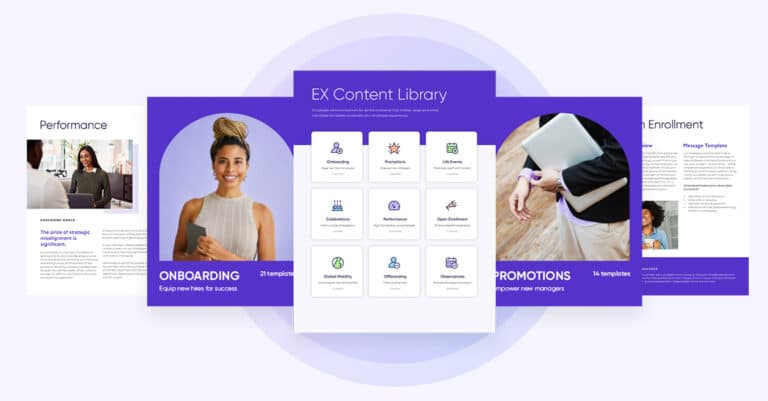The end of the year is a great time to take stock and reevaluate your goals—and that includes internal communications teams. The best leaders continually reevaluate their internal comms strategies so they can set themselves up for future success. Here are three reasons they make reevaluations a best practice today.
Reason #1: Many companies are undergoing digital transformations (and internal communications is key to their success).
Is a digital transformation currently underway at your company? If so, you’re right on trend.
We recently polled our audience to find out how many of their companies are focused on a digital workplace transformation. More than 50% said they were currently working on a transformation; only one-third said that they were not. The results of a recent Gartner survey show similar results: 62% of respondents said they have a management initiative or other transformation program in place to make their businesses more digital.
Here’s the thing about digital transformations—many CEOs don’t immediately think of the vital role internal communications can have in making such initiatives a success. Our research uncovered that most companies struggle to find the budget (46%) and establish ROI (33%) or business cases (31%) for their transformations.
The fact is, the success of any company initiative often comes down whether your employees are able and motivated to meet the goals. If your workers feel disconnected or don’t understand why decisions are being made it’s likely the program will fail.
With a good communications strategy, employees become more engaged, which can help drive success. They need to understand the business objectives and get the relevant information they need to reach your company’s desired outcomes. This not only helps meet your goals, but it leads to higher productivity and revenue.
Reason #2: Your company’s goals and strategies may have shifted (which means you need to rethink your own alignment with them).
Do you know the most recent goals and strategies set by your executive team?
Every internal communications team should have goals that align with broader strategic organizational objectives. However, sometimes these shift from time to time. When you know the clear mission and statement of purpose from your executive team, you’ll be able to convey the benefits your team will provide based on your own employee communications plan.
An aligned strategy may also offer other benefits. Within the first year of building out her communications capability, one CEO said that a less expected—yet most valued—benefit was alignment and improved decision-making for her leadership team.
Remember, the success of any broader company goal depends on how well you engage employees. That means you need an effective employee communications plan. The plan needs to explore each point of employee collaboration, measure communications data, and capture detailed metrics and feedback. Of course, you’ll need to communicate with employees via multiple channels. This is why it’s essential to find a workforce communications platform that best fits your strategy.
#3: It’s always your job to help your company attract (and retain) top talent.
Companies can’t stay competitive if they can’t attract top talent to the workforce. So it only makes sense that the lifecycle of your employees (from pre-hire to post-exit interactions and everything in between) is perhaps the most meaningful part of the job of your internal communications team.
The experience of all of your employees is shaped and guided by your strategy, which needs to be consistent and aligned with your company’s culture and brand. To make the employee experience the best it can be, think like a marketer. This means building fully integrated campaigns and adopting approaches like employee journey mapping. And consider conducting an audit of your employee lifecycle to identify your blind spots as well as your best practices.
These are just three of the many reasons it’s vital to create and continually reevaluate a comprehensive internal communications strategy. But it’s also important to make sure that the program you create is manageable and can grow over time. This requires capturing metrics or KPIs so you can properly measure the effectiveness of your content.
Why you need a workforce communications platform
It’s time to think beyond emails and intranet and about how to communicate to hard-to-reach employees, such as frontline or deskless workers. And it’s essential to establish a strong foundation by selecting an integrated workforce communications platform that spans across your entire workforce and connects the many different tools and channels, creating a omni-channel strategy to reach, engage, and align your employees. A good platform will help your executive team understand the powerful impact internal communications can have on overall success.
Learn more on why you should consider reevaluating your comms strategy even if it is not an initiative, with our latest webinar video, Is Your Internal Communications Strategy Broken?
Download PDF








